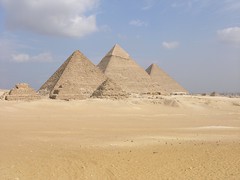 The contemporary art world is buzzing about a newly announced collaboration between UBS Wealth Management and the Guggenheim Museum. It’s easy to see what the excitement is about, especially from a creative perspective. The five year initiative is going to chart creative activity and contemporary art from all around the world.
The contemporary art world is buzzing about a newly announced collaboration between UBS Wealth Management and the Guggenheim Museum. It’s easy to see what the excitement is about, especially from a creative perspective. The five year initiative is going to chart creative activity and contemporary art from all around the world.
Many of the stories you’ll see about this collaboration will focus, with good cause, on the fact that the project is a substantial investment in moving the current conversation about contemporary art from a very Western point of view to a more global perspective.
The Guggenheim UBS MAP Global Art Initiative will identify and support a network of art, artists, and curators from South and Southeast Asia, Latin America, the Middle East, and North Africa as part of a comprehensive program involving curatorial residencies, acquisitions for the Guggenheim’s collection, international touring exhibitions, and far-reaching educational activities. It’s a huge project, with the potential to change everything we think we know about contemporary art and creative vision.
What we haven’t seen yet is an in-depth examination of why this collaboration is a good move for UBS Wealth Management. There’s no confirmed numbers available yet, but art experts have suggested that this type of project will easily set UBS back more than $40 million.
Why is UBS choosing to spend this much money, in this fashion? This New York Times story hints at some of their thinking. Jürg Zeltner, the chief executive of UBS Wealth Management, is quoted as saying, “As art is becoming more and more of an asset class, UBS is looking to increase our profile in these kinds of special fields of interest. More and more we are refocusing our strategy to reach emerging markets, and this project seemed like a perfect fit.”
That explanation comes from a place of logic and rationality, and does a great deal to explain why the collaboration will likely benefit UBS greatly. It’s interesting to move the conversation to another dimension, and examine the unconscious psychological factors that will make this initiative appealing to UBS’s customers.
Customers First: What Motivates Your Customers?
Let’s take a moment to talk about Maslow. (Yes, that pyramid picture was a hint! Thanks for playing along.)
As you remember, Maslow’s research focused on identifying and prioritizing the compelling, if often unarticulated, needs that guide human behavior. At the bottom of the pyramid, we find all the familiar needs—food, shelter, water, sex. We certainly spend a lot of time here talking about the need to belong to a group and the esteem needs—it is essential that we find ourselves held in regard by those we respect, if we’re going to be contented human beings. For most businesses, identifying and meeting needs on this level can be an absolute game changer. This is where dominant organizations begin to separate themselves from the rest of the pack.
But there’s another level on the pyramid. At the apex, the point of self-actualization, we see the needs for creativity, expression, morality—with an emphasis on agape and philanthropy—and freedom from prejudice. It’s important to note that these are needs everyone has, to some degree or another, but we don’t aren’t all equally consciously aware of or focused on them. Self-actualization is not a top priority for everyone.
However, UBS’s clientele is uniquely positioned to ensure that they have their self-actualization needs met. Absent any other differentiating factors, an audience that is relatively free from the constraints of material wants will choose the wealth management service that provides the extra value of meeting these higher-order self-actualization needs. The collaboration with the Guggenheim allows UBS’s clients to participate in a creative endeavor on a global scale.
Will participating in this project gain UBS new clients? We’re not sure. But we can say with absolute confidence that it will strengthen the bond UBS has with their existing base, especially those who are most in touch with and aware of their ability to effect meaningful change in the world. It’s a pretty picture for all involved. That’s why the UBS/Guggenheim collaboration makes good sense.
